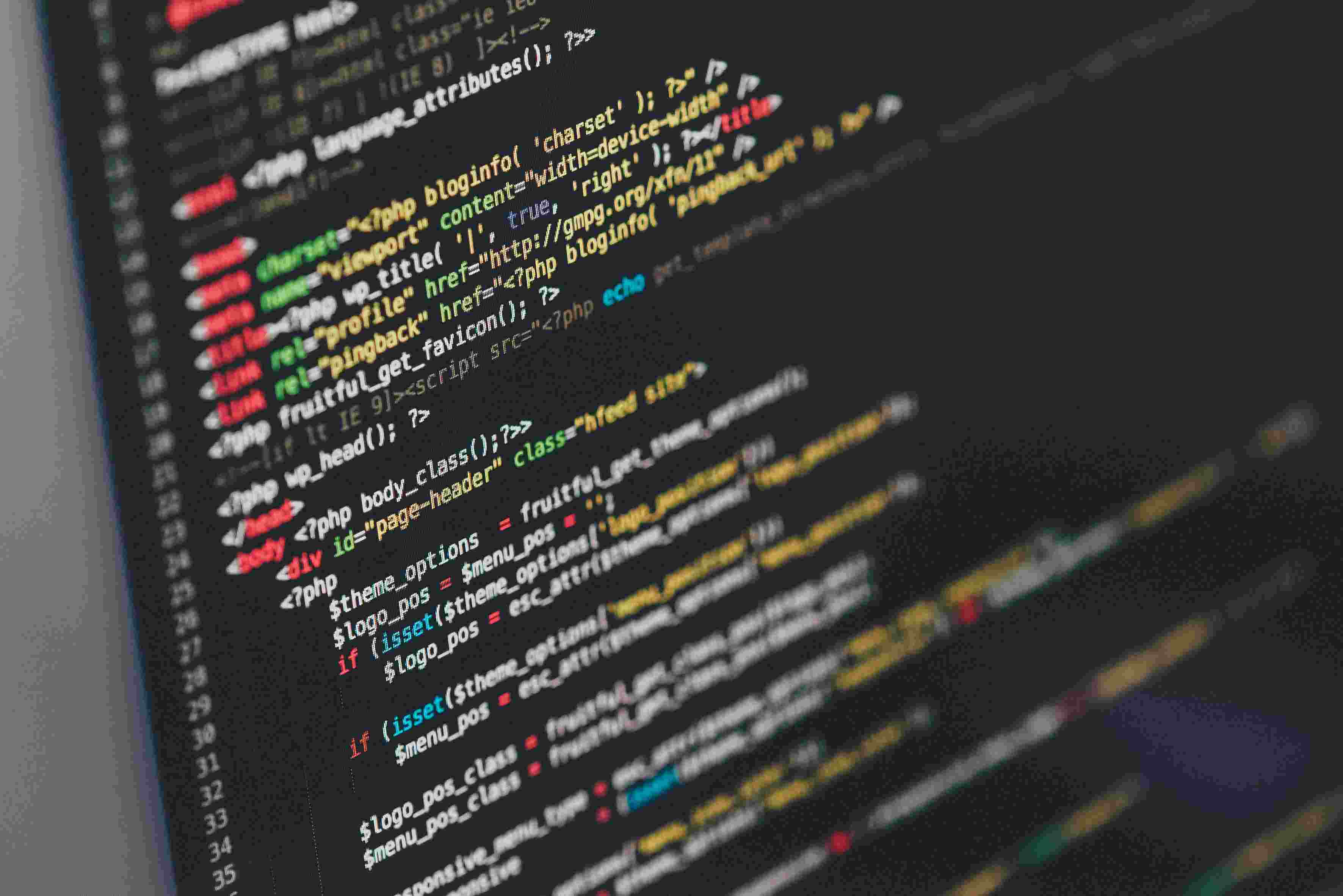Effective Coding Practices: Elevate Your Software Development
Master the art of coding with our guide on effective coding practices to enhance your software development skills.

Introduction
Effective coding practices are the cornerstone of building resilient, scalable, and maintainable software. They are not just about writing code that works; it's about writing code that thrives in the long term and adapts to change with minimal friction. Embracing these practices early on can drastically reduce the technical debt that often hampers project speed and quality. From naming conventions to modular design, the way you write code today shapes the ease of software development tomorrow. Let's embark on a journey to refine our craft, ensuring our code not only meets the current requirements but also accommodates future growth and collaboration effortlessly.
The Pillars of Clean Code
Clean code is not just about writing code that works, but about creating a masterpiece that other developers can read and enhance. It's the hallmark of a skilled developer and a fundamental aspect of software craftsmanship. Let's dive into its core principles.
Readability: Writing for Humans, Not Just Machines
Readable code is like a well-written novel; it's a pleasure to go through, and it tells a clear story. It's essential to structure your code so it can be easily understood by others, or even by you in the future. To achieve this:
- Use meaningful variable and function names: They should reflect their purpose without needing extra comments.
- Follow a consistent style guide: This ensures uniformity in code presentation.
- Break complex problems into smaller, digestible functions: Each should do one thing and do it well.
Simplicity: The Art of Minimalism in Coding
Embracing simplicity in your code is like decluttering your house; it's refreshing and makes finding things a lot easier. To cultivate simplicity:
- Write code that is easy to delete, not just easy to extend: It should be modular and replaceable.
- Avoid over-engineering: Don't build for scenarios that may never occur.
- Make use of design patterns: They provide proven solutions to common problems.
Refactoring: Keeping Your Codebase Fit
Refactoring is the gym session for your codebase; it keeps it healthy and adaptable for the future. Regular refactoring helps to:
- Improve code readability and reduce complexity: Make your codebase more approachable.
- Identify and eliminate dead code: Remove what's no longer useful or necessary.
- Enhance performance: Optimize algorithms and streamline processes.
Strategies for Effective Error Handling
Errors are inevitable, but with the right strategies, they can be transformed into learning opportunities rather than roadblocks. By embracing a structured approach to error handling, developers can ensure that their code not only functions correctly under ideal conditions but also maintains robustness and resilience in the face of unexpected issues.
Anticipating Failures: Proactive Error Management
Like a chess master, anticipating potential errors allows you to stay several moves ahead in the coding game. Develop a thorough testing strategy to uncover edge cases before they become problems. Leverage assertions and contracts to establish clear expectations for your code's behavior. Employ exception handling frameworks judiciously to manage errors gracefully without cluttering the codebase.
Graceful Degradation: Ensuring User Experience
Incorporating graceful degradation into your code is like having an airbag; it protects the user's experience even when things go wrong. Design with fallback options in mind, ensuring that your application has a plan B. Implement user-friendly error messages that guide rather than frustrate. Ensure continuity of service by separating critical and non-critical system components so that the failure of one doesn't topple the whole.
Logging and Monitoring: The Radar for Code Health
Effective logging and monitoring are your code's radar system, always on the lookout for the slightest hiccup. Integrate comprehensive logging tools to keep a detailed record of system behavior. Set up real-time monitoring to detect and alert on anomalies swiftly. Invest in analytics to identify patterns and preempt recurring issues. By keeping a vigilant eye on your system's operations, you can react before users even notice there's a problem.
Version Control: More Than Just Backup
Version control is the time machine of coding, allowing you to revisit any point in your code's history with precision. It's an essential component of effective coding practices, serving not only as a backup but also as a collaboration tool. By keeping track of every modification, developers can merge changes, identify conflicts, and maintain a cohesive development workflow. Think of it as your code's chronicle, a narrative that tells the story of your project's evolution.
Branching and merging are at the heart of version control systems. They empower developers to experiment without fear, creating parallel universes where new ideas can flourish. Branching allows you to diverge from the main codebase to work on features or bug fixes. Merging brings these changes back, intertwining the threads of different development efforts into a seamless tapestry. This dual process ensures that innovation and stability go hand in hand.
Effective version control goes beyond mere functionality; it's about adopting best practices that make teamwork synonymous with efficiency. Commit messages should be clear, concise, and consistently formatted to convey the intent of changes. Regular commits and pulls keep the repository fresh and minimize the risk of significant merge conflicts. And let's not forget about the role of continuous integration, where automated builds and tests validate changes, reinforcing the code quality with each iteration.
Code Reviews: The Collective Wisdom
A code review is a gathering of minds, where collective wisdom leads to polished gems of code. It's a crucial practice in the software development life cycle that not only improves code quality but also fosters knowledge sharing and collaboration.
The Socratic Method: Asking the Right Questions
Approaching code reviews with the Socratic method is like unlocking a treasure of insights through inquiry and discussion. Engage the code author with probing questions to understand the rationale behind their choices. Encourage contributors to justify their approach, promoting a deeper understanding of the code. Foster an environment where questions are welcomed, ensuring a thorough and thoughtful code review process.
Psychological Safety: Creating a Constructive Environment
Building psychological safety in code reviews ensures that every voice is heard and every concern is valued. Aim for inclusivity, where team members feel comfortable expressing their thoughts without fear of ridicule. Promote a blame-free culture, focusing on issues rather than individuals. Cultivate mutual respect, recognizing that each team member brings unique value to the table.
Actionable Feedback: From Good to Great
Actionable feedback in code reviews is the catalyst that transforms good code into great code. Highlight specific areas for improvement with clear examples. Provide concrete suggestions rather than vague comments, enabling developers to make precise enhancements. Balance criticism with praise, acknowledging well-written code to motivate and inspire continuous improvement.
Testing: The Safety Net for Your Code
Testing your code is like having a safety net, ensuring that the act of creation doesn't come crashing down. It's a critical component of software development that verifies your code works as intended and is free of defects. By embracing tests, you can refactor with confidence, integrate seamlessly, and deliver a product that stands up to real-world use.
Effective testing requires a strategic approach. Start by identifying the types of tests that are most beneficial for your project. Unit testing checks individual components, integration testing ensures that different parts of the system work together, and end-to-end testing validates the entire application flow. These layers of testing build a robust defense against unforeseen issues.
But how can you make testing part of your daily coding practice? Firstly, automate tests to run with each build. Secondly, prioritize writing testable code from the outset, keeping functions small and responsibilities clear. Finally, adopt a test-driven development (TDD) mindset where tests guide your code design, not an afterthought. This proactive stance elevates the quality and reliability of your software, making testing a true ally in your coding journey.
Incorporating Testing into Your Workflow
When integrating testing into your workflow, consider the following practices:
- Automate your tests: Set them to run with each code commit to detect issues early.
- Prioritize testability: Write code that is easy to test by keeping functions concise and focused.
- Embrace TDD: Let tests drive your software design, ensuring quality from the start.
By adopting these practices, you solidify testing as a cornerstone of your development process, leading to more resilient and maintainable code. For a deeper dive into the benefits of a test-driven approach, Atlassian offers insightful perspectives on continuous integration and deployment.
Continuous Integration and Deployment: The Rhythm of Release
Continuous integration and deployment create the rhythm that keeps the music of release playing smoothly. By embracing these practices, developers synchronize their contributions, ensuring that each code commit is a step towards a harmonious product. But what does it take to truly master this cadence?
Automated Builds: The first note in our symphony of release. Automated builds ensure that code changes integrate without discord, swiftly identifying any dissonance. Consistent Testing: A melody is only as good as its consistency. Regular, automated testing checks that each new feature performs its part flawlessly. Immediate Feedback: The crescendo of our process. Immediate feedback from continuous integration tools allows developers to correct any off-key changes before they become a part of the permanent composition.
In the world of software development, the absence of continuous integration and deployment can lead to a cacophony of unresolved bugs and integration headaches. To avoid such a fate, teams must tune their processes to the steady beat of automation and collaboration. Through tools and practices detailed by Atlassian, organizations can orchestrate a workflow that sings with efficiency. The result? A seamless release process that hits all the right notes, time after time.
Documentation: The Map to Your Code Treasure
Documentation is the treasure map that guides future explorers through the intricacies of your code. Just as a map is essential for navigating uncharted territories, thorough documentation is crucial for both current and future developers to understand the purpose, functionality, and quirks of your software.
Adopt a consistent format: Easy-to-navigate documentation follows a structured approach. Include code snippets: These provide practical examples of how to use the code. Regular updates: As the code evolves, so should the documentation.
Effective documentation acts not only as a guide but also as a historical record, ensuring that knowledge is preserved and accessible. It's imperative to maintain clarity, as confusion leads to wasted time and resources. To achieve this, integrate documentation into your development workflow. By documenting while you code, the details are fresh and the process becomes second nature.
Remember, the more navigable your documentation, the easier it is for developers to build upon your work, making it a cornerstone of effective coding practices. Consider tools like Atlassian's suite of software to streamline the process and enhance collaboration.
The Essentials of Quality Documentation
When pondering whether to jot down a note or not, err on the side of caution. Accessibility: Ensure that information is easy to find. Clarity: Write in simple, jargon-free language. Context: Don't just document the 'what', but also the 'why'.
Good documentation is akin to leaving a well-marked trail for others to follow, minimizing the risks of getting lost in a maze of code. It's a form of communication that, when done diligently, speaks volumes about the quality of your software and your commitment to excellence.
Conclusion
Effective coding practices are like the secret ingredients to a chef's signature dish; they make all the difference. By embracing clean code, error handling, version control, and code reviews, you've armored yourself with strategies that lead to robust and maintainable software. Testing, CI/CD, and thorough documentation add layers of quality and accessibility, ensuring a resilient codebase that stands the test of time and usage.
Ready to take your coding to the next level? Keep honing your skills and look for opportunities that challenge you to apply these practices. Dive into the vibrant world of software development and let your code speak for itself. If you're on the hunt for a platform to showcase your expertise, check out EchoJobs for exciting software engineer positions that can benefit from your enhanced coding prowess.
FAQs
Why is clean code important in software development?
Clean code is crucial because it ensures that software is maintainable, scalable, and understandable by other developers. It's the foundation for collaborative environments and reduces the risk of introducing errors during development and maintenance.
How do code reviews contribute to effective coding practices?
Code reviews contribute to effective coding practices by facilitating knowledge sharing, catching potential errors early, and ensuring code adheres to agreed-upon standards. They foster a collaborative culture and improve the overall quality of the codebase.
What role does continuous integration play in coding?
Continuous integration plays a key role in coding by automating the process of integrating code changes. It allows for immediate feedback on the impact of code modifications, promotes frequent code testing, and helps maintain a releasable codebase.


